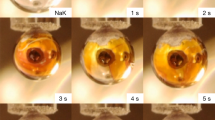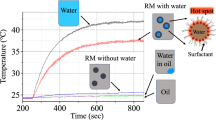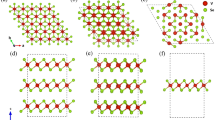Abstract
THE results of our experiments do not confirm Mr. Fleuss's statements (NATURE, July 5, p. 12). Even if the water vapour is always at a pressure less than its equilibrium vapour pressure at room temperature, the McLeod gauge reads low and usually inconsistently. The reason is, of course, to be found in the absorption of water by glass. Water vapour will condense on glass when its pressure is raised, even when the final pressure is no greater than 0.001 mm.; the amount that condenses increases with the time, so that the reading of the gauge depends on the rate at which the mercury is raised. All this is quite familiar to those who work with modern high vacuum apparatus; but Mr. Fleuss's statements, if unchallenged, might mislead some who are only beginning to acquire their experience.
This is a preview of subscription content, access via your institution
Access options
Subscribe to this journal
Receive 51 print issues and online access
$199.00 per year
only $3.90 per issue
Buy this article
- Purchase on SpringerLink
- Instant access to full article PDF
Prices may be subject to local taxes which are calculated during checkout
Similar content being viewed by others
Author information
Authors and Affiliations
Rights and permissions
About this article
Cite this article
CAMPBELL, N., RYDE, J. & DUDDING, B. A Substitute for the McLeod Gauge. Nature 114, 276 (1924). https://doi.org/10.1038/114276c0
Issue date:
DOI: https://doi.org/10.1038/114276c0



